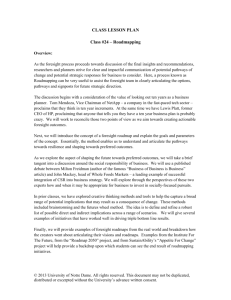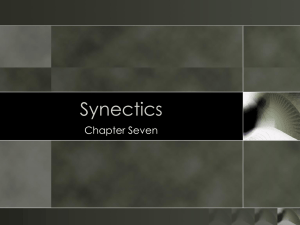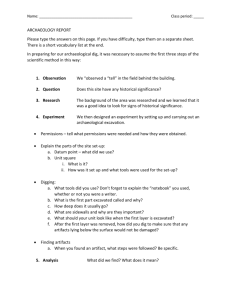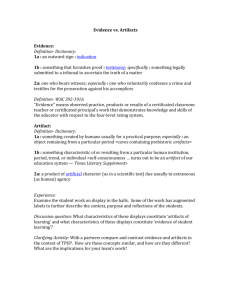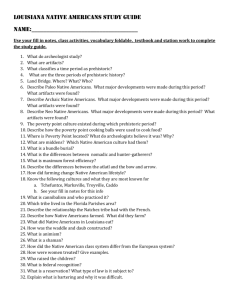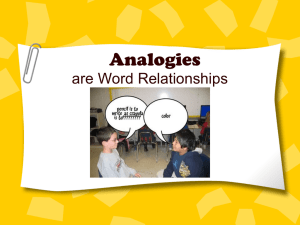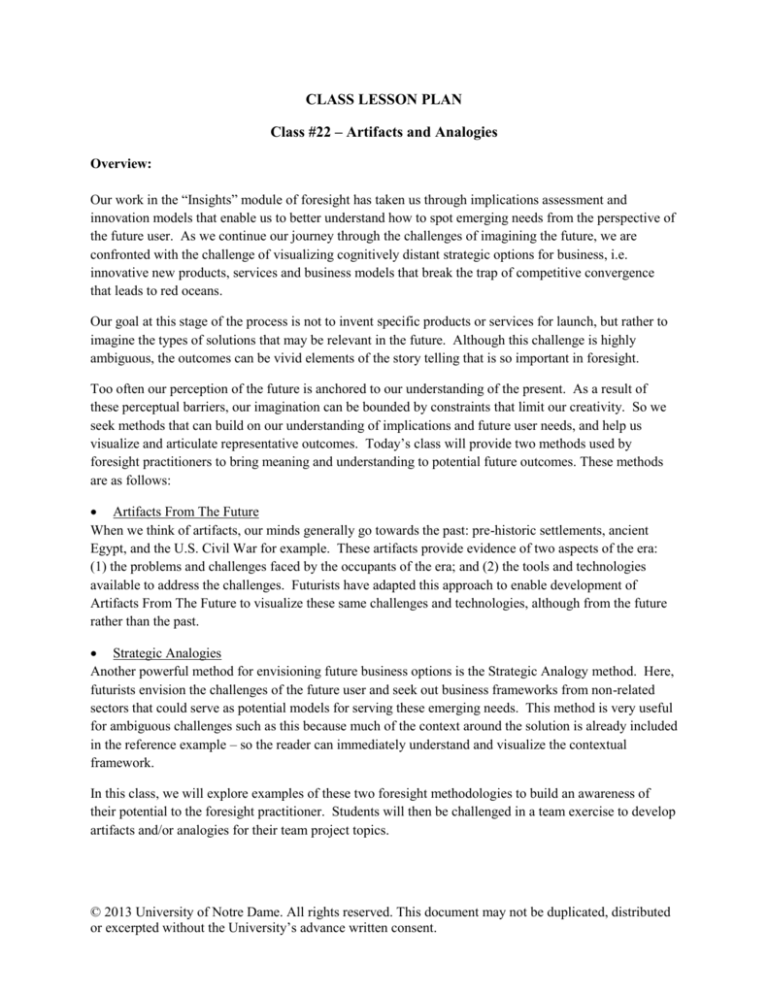
CLASS LESSON PLAN
Class #22 – Artifacts and Analogies
Overview:
Our work in the “Insights” module of foresight has taken us through implications assessment and
innovation models that enable us to better understand how to spot emerging needs from the perspective of
the future user. As we continue our journey through the challenges of imagining the future, we are
confronted with the challenge of visualizing cognitively distant strategic options for business, i.e.
innovative new products, services and business models that break the trap of competitive convergence
that leads to red oceans.
Our goal at this stage of the process is not to invent specific products or services for launch, but rather to
imagine the types of solutions that may be relevant in the future. Although this challenge is highly
ambiguous, the outcomes can be vivid elements of the story telling that is so important in foresight.
Too often our perception of the future is anchored to our understanding of the present. As a result of
these perceptual barriers, our imagination can be bounded by constraints that limit our creativity. So we
seek methods that can build on our understanding of implications and future user needs, and help us
visualize and articulate representative outcomes. Today’s class will provide two methods used by
foresight practitioners to bring meaning and understanding to potential future outcomes. These methods
are as follows:
Artifacts From The Future
When we think of artifacts, our minds generally go towards the past: pre-historic settlements, ancient
Egypt, and the U.S. Civil War for example. These artifacts provide evidence of two aspects of the era:
(1) the problems and challenges faced by the occupants of the era; and (2) the tools and technologies
available to address the challenges. Futurists have adapted this approach to enable development of
Artifacts From The Future to visualize these same challenges and technologies, although from the future
rather than the past.
Strategic Analogies
Another powerful method for envisioning future business options is the Strategic Analogy method. Here,
futurists envision the challenges of the future user and seek out business frameworks from non-related
sectors that could serve as potential models for serving these emerging needs. This method is very useful
for ambiguous challenges such as this because much of the context around the solution is already included
in the reference example – so the reader can immediately understand and visualize the contextual
framework.
In this class, we will explore examples of these two foresight methodologies to build an awareness of
their potential to the foresight practitioner. Students will then be challenged in a team exercise to develop
artifacts and/or analogies for their team project topics.
© 2013 University of Notre Dame. All rights reserved. This document may not be duplicated, distributed
or excerpted without the University’s advance written consent.
Learning Objectives:
Build on the previously developed understanding of implications of change and potential
innovation-based response strategies
Explore the use of proven methods of creative thinking (Artifacts From The Future and Strategic
Analogies) to explore potential business outcomes based on implications of future change
Gain experience using these visualization tools and apply the methods to the team foresight
projects
Key Terms and Concepts:
Competitive Convergence
Cognitive Proximity
Cognitively Distant
Artifacts From The Future
Strategic Analogies
Associative Thinking
1. Inside-Out
2. Outside-In
Superficial Analogies
Class Preparation:
Readings:
No readings for this class.
Project Prep:
Continue to work on developing and expanding on the futures wheels and
innovation options for their projects.
Discussion Questions:
1. What insights have you and your team uncovered by colliding implications across the outer layers
of the futures wheels you are developing?
2. What are examples of collisions that proved to be a little value, and how would you differentiate
these from those collisions that were of higher value (the “keepers”)?
3. What are examples of how your team leveraged the innovation-based response strategies
(empathy, radical resource productivity, viewing compliance as an opportunity, etc.) to better
understand potential strategic response strategies for businesses in the sector you are exploring?
© 2013 University of Notre Dame. All rights reserved. This document may not be duplicated, distributed
or excerpted without the University’s advance written consent.
INSTRUCTOR GUIDELINES
Discussion Launcher:
The goal is to create continuity with the prior sessions on Implications Assessment (Futures Wheels) and
Innovation-Based Response Strategies. So the initial discussion should be around the progress they have
made and the discomfort they may be feeling regarding the ambiguous nature of this part of the process.
Reflect back on what we saw in the elevator pitches from the prior class. Now we need to take the
process to the next step and ask, given what we have discovered about emerging needs, constraints and
technologies, how can we visualize and articulate what the future winners and losers in business may look
like. Remind them that the goal is not to come up with the breakthrough inventions that may define the
winners and losers, but rather to create a visualization of how the future might look in terms of new
solutions and business models to help in articulating the memories of the future.
Class Timeline:
10 Minutes – Quick Review of Implication and Innovation Sessions
10 Minutes – Sector Sharing Session
10 Minutes – Associative Reasoning and Strategic Analogies
30 Minutes – Team Project Development Time
10 Minutes – Quick Report Out on Team Artifacts/Analogies
5 Minutes – Wrap Up and Preview of Upcoming Class
Classroom Activities/Short Assignments:
The goal here is to give a brief overview of the two methodologies, and get the teams working to
put them in play for their topics. Thirty minutes is allocated for team workshop time to develop examples
of either methodology that can be of use in the “Insights” section of their final foresight report. Challenge
the teams to push the boundaries on creative thinking to come up with vivid examples. Take 10 minutes
at the end of class to give teams an opportunity to show and articulate their output.
Multimedia Supplements:
Seek to use updated examples of artifacts and/or analogies from recent scans. Wired magazine
and the Institute For The Future website can serve as sources, however any additional relevant examples
will add value and draw student interest.
Notes and Perspectives:
Supplemental Readings:
How Strategists Really Think, Tapping the Power of Analogy, Giovanni Gavetti and Jan W.
Rivkin (HBS R0504C)
20/20 Foresight or Strategy Under Uncertainty
Meeting the Challenge of Disruptive Change, Clayton M. Christenson and Michael Overdorf
(HBS R00202)
© 2013 University of Notre Dame. All rights reserved. This document may not be duplicated, distributed
or excerpted without the University’s advance written consent.



